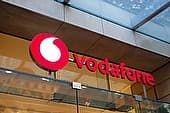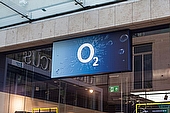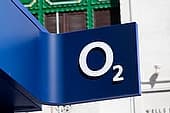Home > Mobile > News > EE using 2G to make 4G mobile broadband even faster
EE using 2G to make 4G mobile broadband even faster
EE have announced they're converting their old 2G spectrum into 4G airwaves, in a process that will boost the mobile data speeds their 4G customers receive.

They're upgrading more than 600 of their sites so as to make them compatible with the latest Category 12 and 16 smartphones (e.g. iPhone 8 and Samsung Galaxy S8), which are capable of maximum download speeds of up to 1Gb.
With this upgrade, customers with the latest phones will also see their upload speeds theoretically double from 50Mb to 100Mb, for instance, although actual performance will of course always vary.
Yet in other mobile news, O2 have become the first operator to offer customers free screen replacements in case of breakages, underlining how their approach to keeping customers happy revolves less around brute speed and more around customer service.
Technical specs
The sites EE are upgrading are spread throughout the UK, including such cities as Manchester, London, Birmingham, Cardiff, and Edinburgh.
For the technically savvy among us, such upgrading involves taking a 10MHz slice from the 1800MHz frequency used for EE's 2G services, and adding it to the spectrum they use for 4G services, which is cut from the 1800MHz and 2.6GHz spectrum bands.
EE refer to this process as the "refarming" of spectrum, and it's being done largely because 2G is being used increasingly less by customers and is becoming increasingly unnecessary, since EE have already extended their 4G coverage to 99% of the UK population (or 85% of its landmass).
Of course, the main reason is to make their 4G services even faster than they already have a reputation for being, although what's interesting is that EE are placing the emphasis on upload rather than download speeds.
In other words, the kind of customer who will benefit most from the upgrade is someone who shares lots of videos and photos on social media, since these need to be uploaded.
Of course, converting underused 2G spectrum into 4G at around 600 sites will also mean that download speeds and coverage reliability will also be improved, although EE aren't giving specific details as to what kind of boost exactly customers should expect.
As their CEO, Marc Allera, said, "Customers need to be on 4G, getting the best out of their new devices with the highest quality phone calls and the fastest mobile data speeds".
4G+
Another thing EE have also been doing to upgrade the strength of their network is rolling out 4G+, which in June clocked in download speeds of 429Mb in Cardiff city centre.
It was also rolled out in certain areas of London, and will be seeing expansion to the likes of Edinburgh, Manchester and Birmingham in the near future.
It works by using two frequency bands and by using four signals instead of the usual two, something which will enable the latest round of smartphones to squeeze the maximum possible speed out of EE's network.
And in another move to make the most out of recently announced new smartphones, EE also announced that they're now selling the Belkin Qi Wireless Charging pad for £29.99, synchronising this announcement conveniently with that of the iPhone 8 and X, both of which will be capable of wireless charging.
O2's example
Yet as much as such announcements place EE firmly at the cutting edge when it comes to network and phone technology, other operators are showing that there are alternative ways to keep customers happy, and that not everyone wants or is in a position to afford the latest gadgetry.
For instance, in July O2 revealed in their quarterly report that they have a customer churn rate of 0.9% - the lowest in the industry, and 1.2% better than EE's (and significantly better than Vodafone's, which was 15.5% not so long ago).
A big part of the reason for this impressively low churn rate - which measures how often customers leave a provider - are the special offers and deals O2 run.
These include their O2 Priority service, which enables customers to get cheap concert and event tickets in advance of the general public, and their O2 Refresh service, which enables customers to split their bills into a handset component and an allowance component.
And just last week, O2 announced another nice little customer service perk, which sees customers who buy the latest handsets from September 8th being entitled to a free screen replacement once every 24-month contract period.
Given that as many as 51% of smartphone users have cracked their screens to some degree, this entitlement will come in very handy. And if nothing else, it shows once again that boosting theoretical download speeds as much as possible isn't the only to keep customers satisfied.
Get insider tips and the latest offers in our newsletter

We are independent of all of the products and services we compare.

We order our comparison tables by price or feature and never by referral revenue.

We donate at least 5% of our profits to charity, and we aim to be climate positive.
Latest News

5 December 2024
Merger of Vodafone and Three UK approved
19 August 2024
New O2 Essential Plan for those on social benefitsGet insider tips and the latest offers in our newsletter



